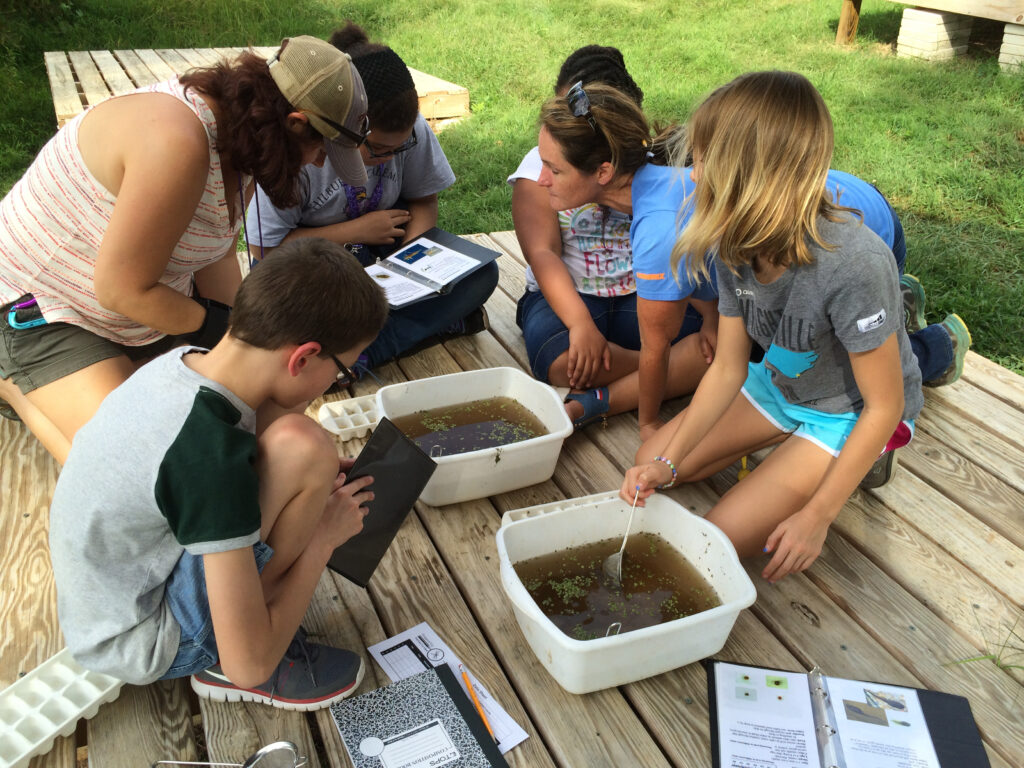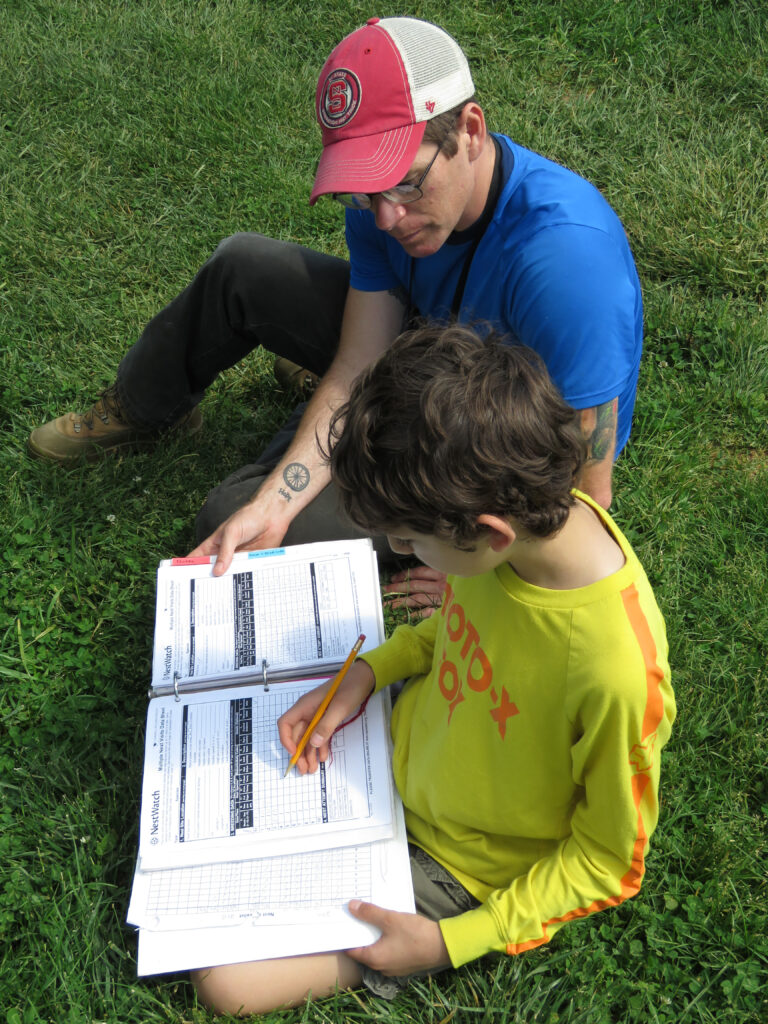Above: Citizen scientists look for caterpillars on milkweed for the Monarch Larva Monitoring Project, which asked participants to help track the reproductive success of monarchs. Photo courtesy of NCMNS
The North Carolina Museum of Natural Sciences Offers Dozens of Citizen Scientist Opportunities
By Elizabeth Brignac
Our July/August issue examines the new Dueling Dinosaurs exhibit at the North Carolina Museum of Natural Sciences (NCMNS). The exhibit includes Cretaceous Creatures, an educational arm of the exhibit in which students across North Carolina identify fossils found in the same layer of sediment as the exhibit’s dinosaurs.
This program is one of many citizen science opportunities associated with NCMNS. Citizen science, sometimes called community science or public science, gives people in the community who lack training as scientists opportunities to contribute to the world’s body of knowledge. “Citizen science is a great way for people to be able to be an actual part of science, even if they don’t have a degree… It provides people the chance to be scientists even if they’ve never done science before,” says Christine Goforth, NCMNS’ head of citizen science.

How Citizen Science Works
Here is how citizen science opportunities often work, though the specifics vary from project to project: scientists identify a topic for which they need a wide body of data—more information than any one team could afford to gather. They then create mechanisms by which ordinary, interested people can go out into the world and gather relevant information and report on it. People might report on weather conditions, local flora and fauna they observe, or astronomical activity. One NCMNS-associated project asks people to examine and report on the cheeses they eat. Another trains participants in observing and recording the behavior of purple martins at Prairie Ridge Ecostation. A third asks people to examine their own earwax.
Right now, NCMNS is associated with 40 different citizen scientist opportunities, so a wide range of possibilities is open to local explorers. Some projects ask for participants within specific age ranges; others are open to both kids and adults. Some require short training sessions; others simply include instructions the citizen scientist can read and follow. Some are online-only, but most ask people to explore their local environments in person, and they can usually be done in local parks or your own backyard. Some projects, like the North Carolina City Nature Challenge, even turn citizen science into games.

The Impact of Citizen Science
One citizen science goal is, of course, to engage ordinary people with the process of gathering data and thinking like scientists—a process that helps demystify science and helps people understand how scientific data is acquired by doing it themselves. But scientists benefit greatly from citizen research. With mechanisms put in place to ensure that data is being reported accurately, the data ordinary people can provide can form an essential basis for scientific discovery.
For example, Goforth describes one example of a citizen science project that is currently helping researchers understand climate change. “We participate in a project called Nature’s Notebook,” she says. “It’s a phenology project, [which means] it’s looking at the the timing of recurring biological events in the annual life cycle of a species. [The project] is showing that the greening in spring is actually happening a little bit earlier than it used to. We’re able to actually see just in the last 10 or 15 years, the time that it starts greening up in the South is actually getting a little bit earlier. And so we are part of that.”
One citizen science project—a game called Foldit related to protein folding—even helped researchers figure out how HIV becomes AIDS. Citizen scientists were able to discover in three weeks information that trained scientists had not uncovered for decades, in part because so many people participated.
Accuracy
How do researchers know the data being gathered is accurate?
“Project leaders know that when they publish their work, they’re going to have to prove that their data is high quality,” says Goforth. “There’s always this burden of proof that falls on all citizen science papers that get published. And so you’re going to have to describe how you ensured that people were collecting the data correctly.” Quality control mechanisms might include algorithms that call for people to re-examine data that falls outside certain parameters, for example, or a requirement that the person collecting data submit a photo of what they observe.
Many projects will keep participants informed about discoveries that have been made based on their data, so citizen scientists can track how the data they gather has made a difference in the world.

Getting Involved
There are two ways to find out about citizen science opportunities at NCMNS. Each approach leads to different types of project, so investigate both.
To find out about upcoming, in-person citizen science opportunities, go to the NCMNS webpage’s events page. On the left side of your screen, you will find an option to filter by event type. Select “citizen science” from the menu, and the events page will produce a list of upcoming citizen science events. You can follow this link to access NCMNS in-person citizen science opportunities available this summer.
You can also go to the NCMNS research page and explore its ongoing citizen science projects. Few of these projects are limited to NCMNS alone. Many are associated with a number of scientific institutions across the state, the country or across nations.
Interested people can also look for citizen science opportunities at local parks, other science-related institutions and botanical gardens. The North Carolina Botanical Garden in Chapel Hill, for example, engages people with several citizen science projects.
Goforth also recommends checking out SciStarter, a website that helps citizen scientists across the nation find projects.
Citizen science is a great way to get outside, explore your local environment, and contribute to the body of human knowledge. Consider participating—and have fun exploring!

